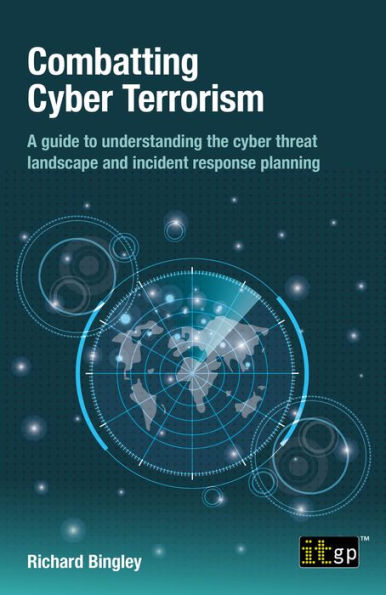In his second book with IT Governance Publishing, Richard Bingley’s Combatting Cyber Terrorism – A guide to understanding the cyber threat landscape and incident response planning analyses the evolution of cyber terrorism and what organisations can do to mitigate this threat.
This book discusses:
- Definitions of cyber terrorism;
- Ideologies and idealisations that can lead to cyber terrorism;
- How threat actors use computer systems to diversify, complicate and increase terrorist attack impacts;
- The role of Big Tech and social media organisations such as X (formerly Twitter) and Instagram within the cyber threat landscape; and
- How organisations can prepare for acts of cyber terrorism via security planning and incident response strategies such as ISO 31000, ISO 27001 and the NIST Cybersecurity Framework.
Increasingly, cyber security practitioners are confronted with a stark phrase: cyber terrorism. For many, it conveys fear and hopelessness. What is this thing called ‘cyber terrorism’ and what can we begin to do about it?
Malicious-minded ICT users, programmers and even programs (including much AI-powered software) have all been instrumental in recruiting, inspiring, training, executing and amplifying acts of terrorism. This has resulted in the loss of life and/or life-changing physical injuries that could never have occurred without support and facilitation from the cyber sphere. These types of attacks can be encapsulated by the phrase ‘cyber terrorism’.
This book recounts case studies to show the types of threats we face and provides a comprehensive coverage of risk management tactics and strategies to protect yourself against such nefarious threat actors. These include key mitigation and controls for information security or security and HR-related professionals.
In his second book with IT Governance Publishing, Richard Bingley’s Combatting Cyber Terrorism – A guide to understanding the cyber threat landscape and incident response planning analyses the evolution of cyber terrorism and what organisations can do to mitigate this threat.
This book discusses:
- Definitions of cyber terrorism;
- Ideologies and idealisations that can lead to cyber terrorism;
- How threat actors use computer systems to diversify, complicate and increase terrorist attack impacts;
- The role of Big Tech and social media organisations such as X (formerly Twitter) and Instagram within the cyber threat landscape; and
- How organisations can prepare for acts of cyber terrorism via security planning and incident response strategies such as ISO 31000, ISO 27001 and the NIST Cybersecurity Framework.
Increasingly, cyber security practitioners are confronted with a stark phrase: cyber terrorism. For many, it conveys fear and hopelessness. What is this thing called ‘cyber terrorism’ and what can we begin to do about it?
Malicious-minded ICT users, programmers and even programs (including much AI-powered software) have all been instrumental in recruiting, inspiring, training, executing and amplifying acts of terrorism. This has resulted in the loss of life and/or life-changing physical injuries that could never have occurred without support and facilitation from the cyber sphere. These types of attacks can be encapsulated by the phrase ‘cyber terrorism’.
This book recounts case studies to show the types of threats we face and provides a comprehensive coverage of risk management tactics and strategies to protect yourself against such nefarious threat actors. These include key mitigation and controls for information security or security and HR-related professionals.

Combatting Cyber Terrorism: A guide to understanding the cyber threat landscape and incident response planning
315
Combatting Cyber Terrorism: A guide to understanding the cyber threat landscape and incident response planning
315Related collections and offers

Product Details
| ISBN-13: | 9781787785212 |
|---|---|
| Publisher: | IT Governance Publishing |
| Publication date: | 05/09/2024 |
| Sold by: | Barnes & Noble |
| Format: | eBook |
| Pages: | 315 |
| File size: | 2 MB |
